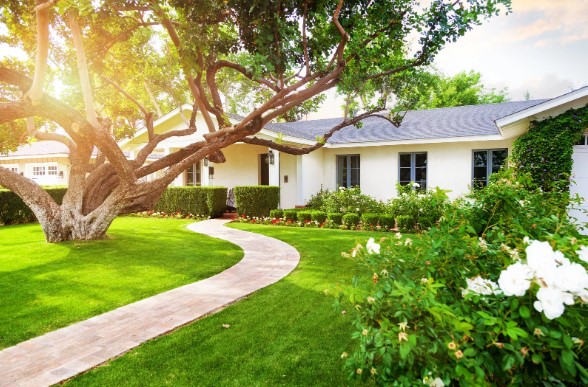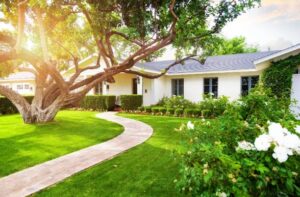
 Are your containers always overflowing following a rainstorm? Are you dealing with standing water in your yards, flooding basements, or home foundational concerns? Now is the time to look into proper drainage solutions that are not only aesthetically pleasing but also essential for protecting your home’s foundation. In this article, we will discuss clever maneuvers to ensure proper drainage and how you can landscape your yard with design tips that will protect its health and performance. So let’s get started on creating an inviting outdoor space with a strategic plan for efficient draining!
Are your containers always overflowing following a rainstorm? Are you dealing with standing water in your yards, flooding basements, or home foundational concerns? Now is the time to look into proper drainage solutions that are not only aesthetically pleasing but also essential for protecting your home’s foundation. In this article, we will discuss clever maneuvers to ensure proper drainage and how you can landscape your yard with design tips that will protect its health and performance. So let’s get started on creating an inviting outdoor space with a strategic plan for efficient draining!
Identify areas of your yard that are prone to flooding
As spring showers bring May flowers, they can also bring unwelcome flooding to your yard. Whether it be due to poor drainage or natural topography, it’s important to identify the areas on your property that are prone to flooding. Perhaps it’s a low-lying section of lawn or a spot near a downspout. By taking note of these areas, you can take preventative measures to avoid costly damage to your home and property. Plus, with a little creativity, you can turn these problem areas into beautiful and functional rain gardens or drainage swales. Don’t let a soggy yard get you down – take action and turn it into a unique feature of your landscape.
Install swales and berms to divert water away from these areas
Do you have areas on your property that always seem to flood or become waterlogged? According to foundation companies houston, water can create many issues including weakening your home’s foundation. Installing swales and berms can be a simple yet effective solution to divert water away from these problem areas. Swales are shallow ditches that follow the natural contours of your land to collect and disperse water, while berms are raised mounds that can block the flow of water or create a holding area for excess water. By strategically placing these features on your property, you can prevent flooding and promote healthy soil and plant growth. Investing in swales and berms can not only save you from costly water damage repairs but also provide a sustainable solution to manage water runoff on your land.
Make sure you choose the right plants for proper drainage in your yard
Planting the right flora can significantly enhance the aesthetics of your yard, but it’s also important to consider the proper drainage. Plants need adequate drainage, failing which they can’t grow and thrive healthily. Infrequent or heavy rainfall, soil types, and the overall topography of your yard are important factors to consider when selecting the right plants. Some plants thrive better in well-drained soil, while others require moisture retention. It’s always a good idea to research and consult with professionals to select the right plants that will complement your yard while also thriving in the appropriate drainage conditions. By choosing the right plants, you can maintain a beautiful yard and enjoy your outdoor space.
Incorporate rocks and gravels into the design to promote runoff
Nature has its own way of regulating water, but sometimes we need to give a helping hand. Incorporating rocks and gravel into the design of your outdoor space is a great way to promote runoff. Not only does this add an aesthetically pleasing element to your design, but it also helps prevent erosion and flooding. By introducing a porous surface, you allow water to permeate the soil, reducing the risk of water damage to your plants and structures. So why not embrace the beauty of nature and incorporate rocks and gravel into your next outdoor design project?
Use raised beds or planters for planting vegetables or flowers
If you have limited garden space or are looking for a way to add some style to your planting, raised beds or planters are a perfect solution. Elevating your plants off the ground not only makes them more visible, but it also allows for better soil quality control, higher yields, and easier maintenance. Plus, with the variety of materials available (wood, metal, stone, etc.), you can find a design that complements your outdoor living space or adds some charm to your vegetable garden. Raised beds or planters give you the opportunity to create your own personalized oasis and enjoy the fruits (and flowers) of your labor.
Add a rain barrel to collect water for irrigation during dry spells
As the effects of climate change continue to become more apparent, it’s becoming increasingly important to find ways to conserve our natural resources. One simple yet effective way to do this is by adding a rain barrel to your home’s irrigation system. Not only does this help you cut down on your water bill, but it also helps reduce strain on local water resources during periods of drought. Plus, using collected rainwater can actually be healthier for your plants since it doesn’t contain the added chemicals found in most tap water. By taking this small step, you’re not only helping the environment but also creating a more sustainable and cost-effective home for yourself.
In essence, it is possible to create a beautiful outdoor space that also functions as an effective flood management solution for your property. Think of it like a rain garden – the number one way to increase your home’s resiliency to flooding. To do this, you must identify the areas of your yard that are prone to flooding, install swales and berms to divert water away from those areas, choose plants for proper drainage, incorporate rocks and gravels into the design for runoff control, utilize raised beds or planters for planting vegetables or flowers, and install a rain barrel for irrigation during dry spells. Ultimately, with these techniques in place, you will be better prepared should another heavy rainfall event occur in your area. By taking proactive steps now, you can have peace of mind knowing that your property is well protected against floods and future damage.
